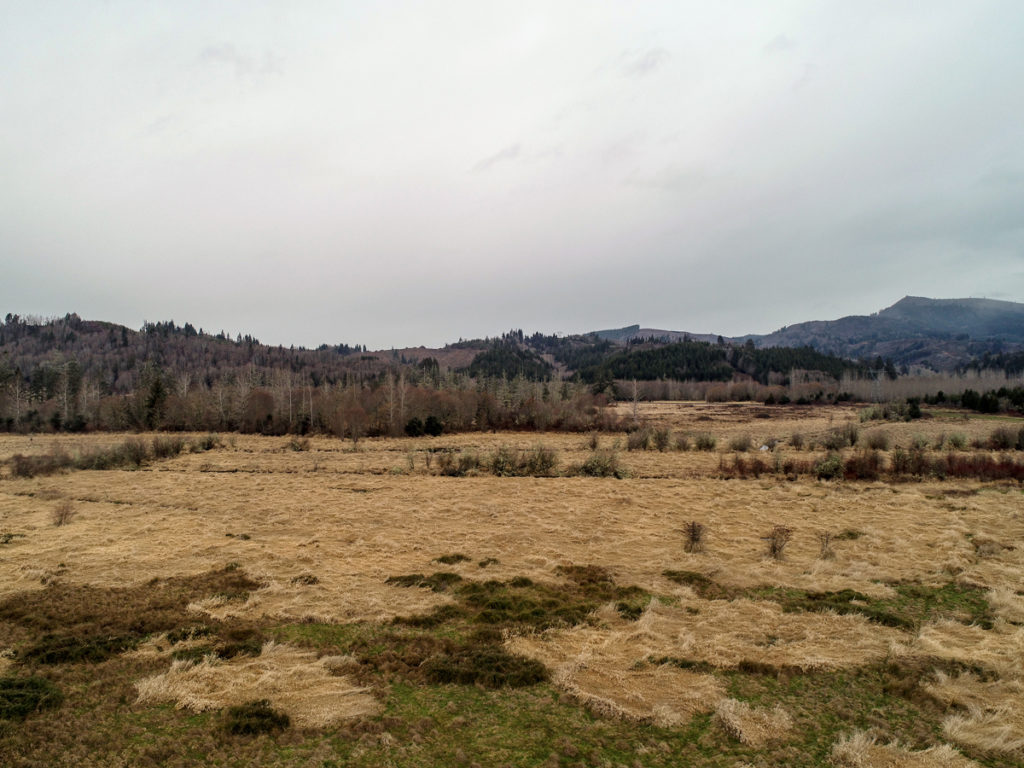Coastal Conservation Roundup
Columbia Land Trust kicked off 2019 with some early conservation successes along the Columbia River Estuary.
By Jay Kosa
Since the 1880s, more than half the floodplain of the lower Columbia River has been converted to agricultural, residential, or other human uses. Today, habitat loss threatens a number of fish and wildlife species. Columbia Land Trust, in response, is conserving key remaining strongholds of forest and wetland habitat and restoring the land where possible.
Chinook River
In early February, the Land Trust acquired 23 acres of dense upland forest and scrub-shrub wetland in the Chinook River floodplain, directly adjacent to 285 acres we conserved in 2017. In this area along Baker Bay in Pacific County, Washington, vegetation is so dense and the wetland is so soggy that it is nearly impossible to navigate on foot. What the area lacks in hike-ability, it makes up for in habitat value for a host of wildlife species. Waterfowl, deer, elk, river otter, and beaver call the floodplain’s tidal wetland and upland forest home. The wetland supports federally threatened lower Columbia River salmon and steelhead runs, while Sitka spruce on the forested upland offers habitat for nesting marbled murrelet, bald eagle, and many other species, including cavity-dwelling birds.
Combined with the nearby Chinook unit of Washington Department of Fish and Wildlife’s Johns River Wildlife Area and the 600-acre Fort Columbia State Park, more than 1,700 acres of critical habitat in the area are now conserved for the benefit of local fish and wildlife. The Land Trust is grateful for the support of its funding partners, the U.S. Fish & Wildlife Service in collaboration with the Washington State Department of Ecology.

Aerial view of the Elochoman River floodplain area recently conserved by Columbia Land Trust. The yellow vegetation is invasive reed canarygrass, which our land stewards will work to replace with native trees and shrubs.
Lower Elochoman River
Between September 2018 and March 2019, the Land Trust, with funding help from Bonneville Power Administration, purchased three properties on the lower Elochoman River just off the Columbia River near Cathlamet, Washington, in Wahkiakum County. Totaling 122 acres, the properties were historically wetlands and floodplain of the Elochoman River, which supported an array of salmon and steelhead species. Over the last 100 years, these lands were cleared, and the floodplain was diked and diverted to support grazing. Now that these acres have been conserved, the Land Trust will be able to complete a floodplain restoration project benefitting salmon, steelhead, eulachon, numerous migratory waterfowl, shorebirds, and federally listed Columbian white-tailed deer. The area is in close proximity to the Land Trust’s existing conserved lands along the lower Elochoman and Indian Jack Slough, as well as the Lewis and Clark National Wildlife Refuge and the Julia Butler Hansen Refuge for the Columbian White-Tailed Deer. Together, these lands offer a rich base of wetland and forest habitat.